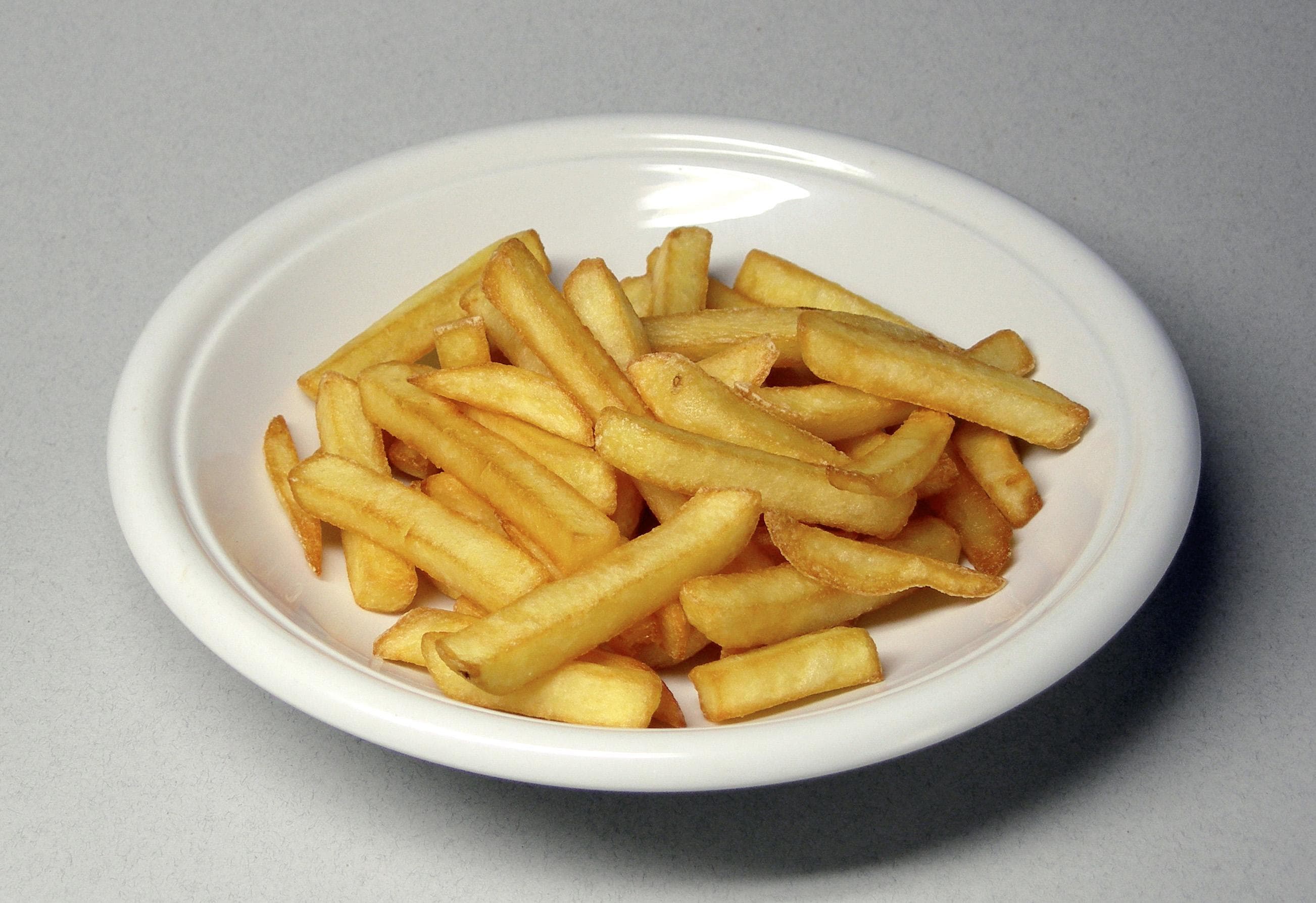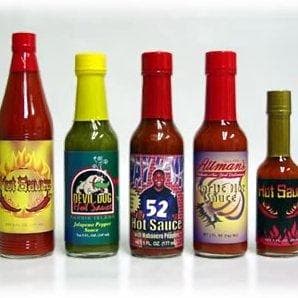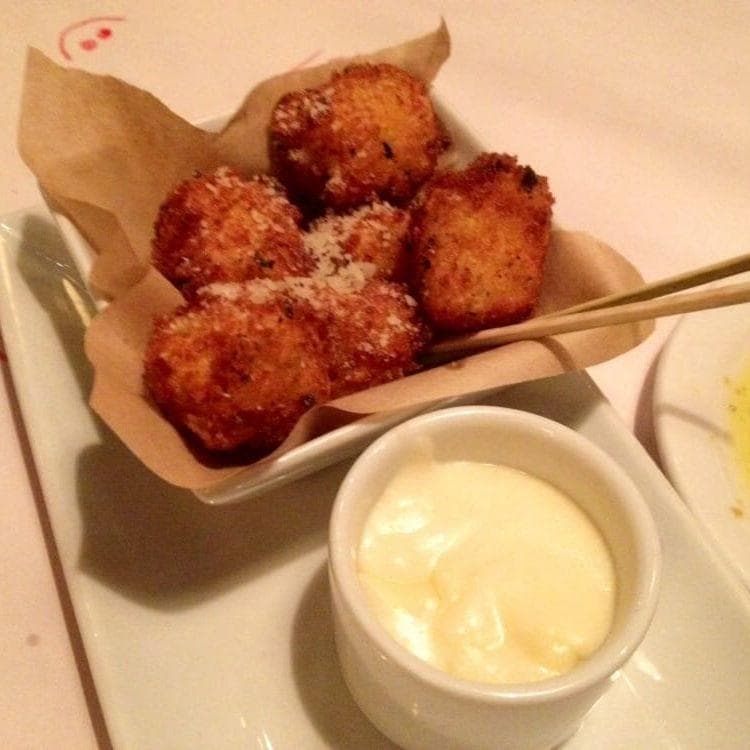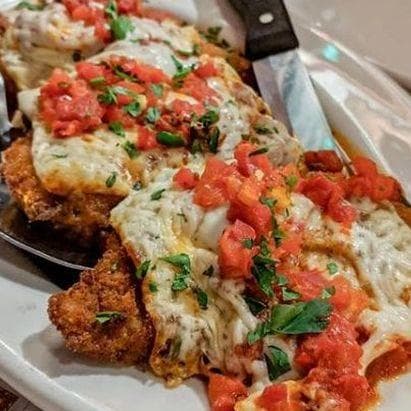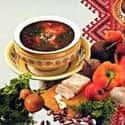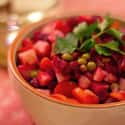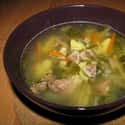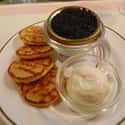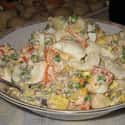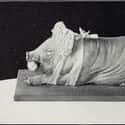-
(#1) Syrniki
Syrniki, or cheese pancakes, were made from tvorog, a dry-curd cheese, and were a staple for breakfast in the Soviet Union.
Often cooks added fresh or dried fruit to the pancake or included some compote. Once a mixture of cheese, eggs, flour, and other items to taste was ready, it was poured into a buttered skillet and cooked until brown on one side. It was then flipped and browned on the other.
Syrniki could be served with more fruit or with sour cream.
-

(#2) Kotleti
Falling somewhere between a meatball and a hamburger, kotleti includes minced meat mixed with vegetables like cabbage, carrots, and beets. The mixture may or may not be breaded but is always fried.
Kotleti didn't always indicate chopped meat and additives, it once referred to cutlets of meat.
-
(#3) Borscht
- Jewish cuisine
Perhaps the most identifiable Russian meal, borscht was generally made up of broth, beets, and cabbage with countless other additives, including potatoes, beans, eggs, vegetables, and cream. The dish was served chilled or piping hot depending on the season and preference. Borscht also took on regional differences. In some regions, like Romania, fruit was often added and seasonal availability of foods often dictated what was thrown into the mix.
As a meal consumed by poor Russians long before the rise of the Soviet Union, borscht was touted as a healthy, relatively easy, and delicious meal by military men, Soviet premiers, and cosmonauts alike. Borscht even appears in historical events, like the mutiny on the Battleship Potemkin, and in literary works, like Master and Margarita.
During the Cold War, recipes for borscht remained well-guarded. When it was finally released by the CIA, a traditional borscht recipe from 1948 revealed how beets, fat, bouillon, tomato paste, and vinegar were combined in a closed pot before adding flour, laurel leaves, and seasoning. With cabbage and potatoes incorporated into the mix, borscht was served after subsequent stewing. Borscht could also include sauerkraut, beet leaves, and millet, depending on what a cook had on hand.
-
(#4) Chicken Kiev
Thought to be a dish invented during the 1800s, Chicken Kiev has long been considered a delicacy, even during the Soviet period. The dish featured chicken fillets with a bone sticking out of the side. The meat was filled with a butter of sorts and came to be served at restaurants throughout major cities in Russia. It later found global attention, especially popular among tourists as they were introduced to Russian cuisine at Intourist restaurants, which were sponsored by the official tourist agency of the Soviet Union.
Both Russians and Ukrainians claim ownership of Chicken Kiev, something that found new attention when George H.W. Bush gave his so-called "Chicken Kiev Speech" in 1991. The talk, delivered from Kiev, which was part of the Soviet Union at the time, indicated Bush and the United States did not support Ukrainian independence as the breakup of the Soviet Union loomed.
-
(#5) Vinegret
Drawing from both the French vinaigrette tradition and the Russian practice of finely chopping vegetables, vinegret was a term applied to just that - vegetables chopped up and covered in an oil-based dressing. Some vinegrets featured meat, but it was more common to have cabbage, beets, and pickles covered in sunflower oil during the Soviet era.
The vegetable ingredients in a vinegret were boiled before they were chopped to make them soft and tender. Vinegret was served as an evening meal presented alongside meat, bread, and soup.
-

(#6) Steak And Onions
Meat was a luxury in the Soviet Union, thus the best cuts of beef did not appear on average dinner tables. Restaurants also struggled to provide quality meat options, so in order to make cheaper cuts palatable, many coated meat in breadcrumbs, cooked it for long periods of time, or supplemented it with more common items, like onions. That said, many state-owned restaurants did their best to offer good cuts of meat, punishing managers and food-distributors who misrepresented or cheated consumers. One Polish meat distributor, Stanisław Wawrzecki, was slain for meat distribution fraud in 1965.
Steak in the Soviet Union was different than in the United States. When Duke Ellington visited the Soviet Union while on tour during the early 1970s, he demanded steaks - a staple of his diet alongside Coca-Cola, sugar, and limes. Ellington was told by the State Department that steak would "not taste like steak in the United States," and couldn't guarantee he'd be satisfied with the food in the Soviet Union. Ellington was ultimately "unable to eat Russian steaks" and when US state officials later heard Ellington was losing weight while on tour, they had a dozen T-bone steaks flown to Minsk for the musician.
-
(#7) Rassolnik
Soups were common features on Russian tables, especially since they were made of whatever was on hand.
Rassolnik was one such soup. It may once have been called kaliya at one point in history when it was a thicker stew-like meal that included caviar, chicken, and even kidneys. More traditionally, Rassolnik is made of beef, barley, and pickles.
-
(#8) Blini And Caviar
Caviar was readily available before 1917, but after revolution struck and austerity set in, caviar was one of the items only the elite could get their hands on. Caviar was often eaten on a pancake, or blini, made of flour, buckwheat, eggs, milk, and water.
Blinis weren't always eaten with caviar - they could be topped with jelly or butter. Fish - whether it was pickled, smoked, or salted - is also often commonly eaten on blinis. Traditionally, the more luxurious your toppings, the smaller the cake.
The caviar in Soviet Russia was most commonly of the black variety, usually from sturgeon. According to Tamara Korshunova, an employee at the Hermitage Museum in St. Petersburg, Russia, she and her family survived on a tin of caviar during the siege of Leningrad in 1941 and 1942. Her family happened upon an expensive yet for-sale can of caviar at a local store and purchased it right away.
Caviar continued to be associated with luxury and wealth, especially in locations outside of the Soviet Union. In 1980, for example, a caviar smuggling ring was investigated after several cans of the foodstuffs were sent out of the Soviet Union labeled as herring. Suspects were supposedly found with "gold, silver, and jewels unimaginable in the Soviet Union" after selling the caviar in Europe.
-
(#9) Okroshka
Okroshka was made out of a mix of meat, vegetables, and kvas, a fermented drink made from bread and fruit. Okroshka usually included radishes and cucumbers cooked for such long periods of time that it was difficult to tell the quality of ingredients.
When food was scarce, okroshka usually included whatever could be found. Instead of quality meat, scraps were thrown in, but by the end of the 1950s, sausage and frankfurters were used. In particularly trying times, okroshka lacked meat of any kind.
Okroshka was served cold, and over time, cooks began to substitute kvas with kefir. In addition to these two versions of okroshka, the cold soup may have even included vodka.
-
(#10) Mayonnaise
Many dishes in the Soviet Union included mayonnaise; it was readily available and blended with pretty much everything, including meat and potatoes in the dish Salat Olivier. Mayonnaise was relatively easy to make, politically endorsed, and had longevity on shelves. It was an ideal kitchen staple. When cooks were left with an array of ingredients, mayonnaise was used to fuse it all together.
In addition to Salat Olivier, mayonnaise was found in a dish called "herring under a fur coat." The meal included pickled (or salted) herring topped with onions, beets, carrots, and other vegetables with mayonnaise squeezed in between layers.
Some people ate mayonnaise in soup, in cake, and on liver, attesting to the egg product's versatility. That said, at least one American in Russia, Jennifer Eremeeva, called it "a metaphor for everything that’s wrong with Russia."
-

(#11) Fried Eggs With Jam
During WWII, eggs were not a common commodity in the Soviet Union and the population opted for powdered eggs in their stead. This lasted through the mid-1950s when eggs began to reemerge in the market, but to try to sell people on the powdered variety, Soviet propaganda smeared real eggs to such an extent that people were hesitant to eat them. Eventually, a campaign to repair the healthy, desirable status of the egg in Soviet Russia succeeded and people began to eat them again.
Eggs were eaten in numerous forms and included in all kinds of dishes. Eggs were commonly consumed with meat, vegetables, and fruit - including pickled and jammed options.
-
(#12) Suckling Pig With Buckwheat
Buckwheat was a common feature in Soviet cuisine, appearing in everything from blinis to stuffing. Buckwheat was a "superfood" in Soviet Russia. It could be mixed with milk, eggs, cheese, or fruit as a porridge or with vegetables and other grains for a more savory dish.
When Russian Premier Nikita Khrushchev was presented with a suckling pig stuffed with buckwheat on an official visit to Bulgaria in 1962, he was not pleased, however. Suckling pig was a delicacy and one that sent a clear message of celebration and excess. The presentation of such a lavish culinary display angered Khrushchev and prompted him to chide the Russian ambassador, asking him “Do you think communism has already arrived?... Who gave the order for this?" The ambassador explained extra funds had been allocated for Khrushchev's visit but it was not common fare. Despite his initial anger, Khrushchev reportedly ate the meal.
-
(#13) Aspic
Aspics, or meat jellies, were made from boiling meat stock, cooling it, and mixing in ingredients such as roasted meat and fish. Also known as kholodets and galantine, aspic was served cold at celebratory feasts and holiday meals.
The fundamental ingredients of aspic remained consistent, with meat products serving at its base, but the quality of that material varied. According to accounts from Leningrad in 1941 and 1942, aspic was made from leather belts and wood glue (also derived from animal byproducts). According to Anna Ostroumova-Lebedeva's diary entry from January 1, 1942, they ate "wood glue" but the aspic was "not so disgusting if you add[ed] cinnamon or a few bay leaves."
There were even indications that human remains were used to make aspic. One Soviet officer who deserted in 1942 told German radio Leningrad was "on its last legs," adding, "Putrefied corpses are now its main source of food. The remaining inhabitants eat meat aspic made out of glue and human flesh."
New Random Displays Display All By Ranking
About This Tool
As we all know, there are no private restaurants in Soviet Russia and most of the foods are provided by the government. This is the food dictatorship of the first decades under the guidance of communist ideology. At that time, the Soviet government tried its best to disrupt the circulation of food on the free market and led more and more foods to government-owned retail stores and government offices and canteens of industrial factories.
Food in Soviet Russia is not rich, but there are many innovative people actively cooking new food, some of them are even weird. You will find random 13 unconventional foods with the random tool, such as chicken kiev, vinegret, rassolnik, and more.
Our data comes from Ranker, If you want to participate in the ranking of items displayed on this page, please click here.



